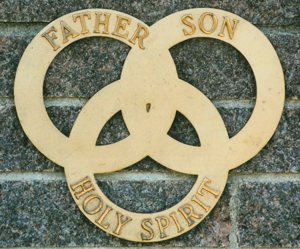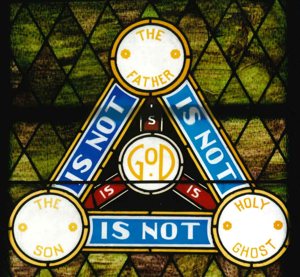During the Fourth and Fifth Centuries, the Church was beset by conflict over different understandings of the God the Father, Jesus, and the Holy Spirit, who they are and their relationship to each other. A series of three major ecumenical councils addressed these questions and progressively defined the Church’s doctrine of the Most Holy Trinity.

The Council of Nicaea (325). Nicaea is a city in northwest Asia Minor or modern-day Turkey, the location of the first ecumenical council, selected because it was the emperor’s summer residence. The council was not called by the Pope, St. Sylvester I, but instead by the Emperor Constantine who wanted to restore unity to a polarized Church that was feuding bitterly. Over two hundred and fifty bishops attended, but not the Pope who was elderly and unable to travel. The debate centered around Arianism, a position put forth by Arius (d. 336), a priest from Alexandria, Egypt, who denied the divinity of Jesus. He claimed that only the Father is unbegotten, and that Jesus is creature, made by the Father at some later time, is not preexistent, and is less than God but greater than any human being. Arius was supported by a large contingent of the bishops. The council debate was so contentious that a fistfight broke out between Arius and St. Nicholas of Myra. Arianism was condemned by the Council as heresy.
The Council established the Nicene Creed and clarified that Jesus is divine. The creed states that there is one God and three Persons: the Father, the Creator, in Greek Pantokrator, the Almighty; Jesus Christ, the only begotten Son of God; and the Holy Spirit, who proceeds from the Father and the Son. Jesus is not a creature made by the Father. Rather the council used a Greek word, homoousios, today translated consubstantial, emanating from the Father’s substance, “begotten, not made.” The Father and the Son are “one in being,” coequal and coeternal.

The First Council of Constantinople (381). Constantinople is in northeastern Asia Minor, was the capital of the East or the Byzantine Empire, and the location of the second ecumenical council. The Council was called by the Emperors Theodosius of the East and Gratian of the West, not Pope St. Damasus I. All 186 bishops in attendance were from the East; 150 reaffirmed the doctrines promulgated at Nicaea, 36 did not and were branded heretics. The Nicene-Constantinopolitan Creed developed after the Council; the same creed recited at Mass. The Council reaffirmed and defined the divinity of the Holy Spirit in response to the Macedonians who denied the divinity of the Spirit. The Council also condemned Apollinarianism, a heretical belief that Jesus is divine, not human, and that Jesus did not have a human soul.
The Council of Ephesus (431). Ephesus is a city located on the western edge of Asia Minor along the Aegean Sea, and it served as the site for the third ecumenical council. The Council was convened by Emperor Theodosius II, not Pope St. Celestine. It reinforced the Church’s doctrine that Jesus is “true God from true God.” Also, to refute Nestorius and to underscore the divinity of Jesus, it declared that Mary is not only the mother of Christ but also the Mother of God, Theotokos, a Greek term meaning God-carrier or God-bearer. The Council also condemned Nestorianism, the heretical belief that Jesus is two separate persons, one divine, one human, and that Mary is the mother of Jesus but not the mother of God. The Council stated that Jesus has two natures, divine and human, but is one person.



